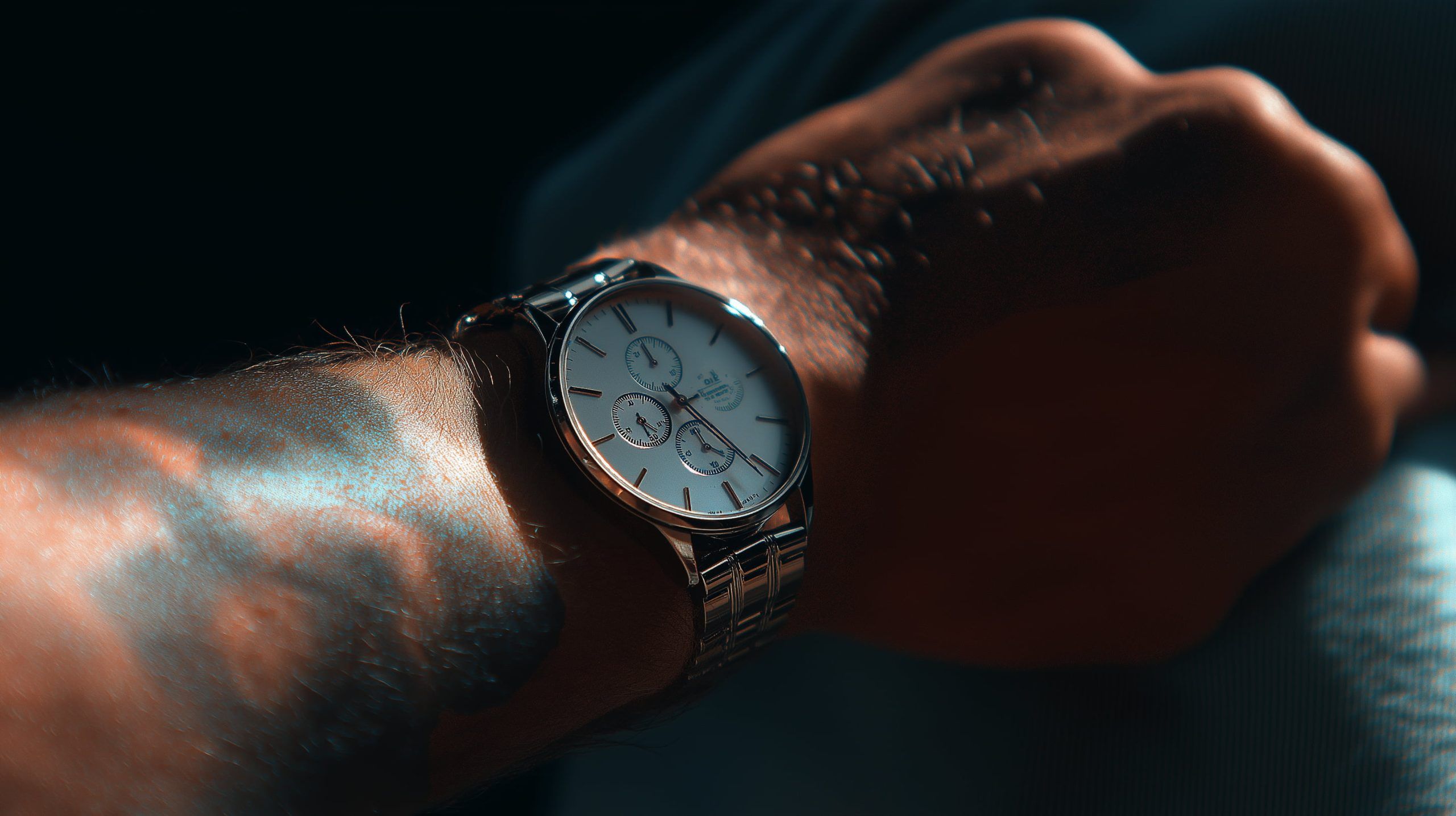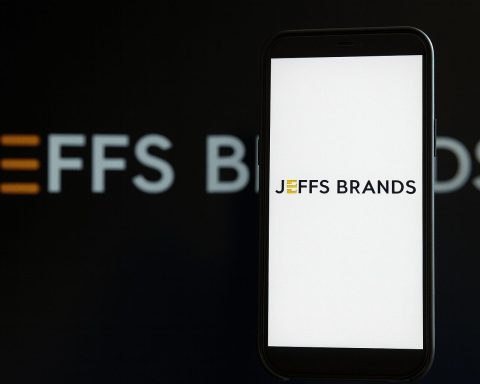- Apple’s big event confirmed: Apple will hold its launch on Sept. 9, 2025, where the new Apple Watch Series 11 is expected to debut alongside the iPhone 17 [1]. Rumors point to major upgrades – from a higher-resolution display and blood-pressure sensor [2] to even a built-in camera for AI features (per Bloomberg) [3]. Leaks hint this could be the Apple Watch’s biggest evolution yet, with emergency satellite messaging and AI fitness coaching on the horizon [4].
- Samsung’s slump and counterattack: Samsung’s smartwatch shipments plunged 18% in Q1 2025, dropping the brand to 4th place globally with only ~7.5% market share [5]. An industry analysis called this drop “a warning sign” as Chinese rivals raced ahead [6]. Samsung is fighting back – it launched the Galaxy Watch 8 series (including a new Ultra) in July, touting advanced health tracking (sleep apnea detection, blood pressure) and AI coaching features [7]. In a symbolic shift, Samsung will also end support for its old Tizen OS watches on September 30, 2025, completing its move to Google’s Wear OS [8].
- China’s wearables surge: Chinese brands Huawei and Xiaomi each grew shipments ~53% in early 2025 [9] [10], eroding Samsung’s lead. Huawei alone grabbed 16% of the global smartwatch market and has a “Ride the Wind” event set for Sept. 19 in Paris to launch its Watch GT 6, teased to offer ultra-long battery life and high-precision GPS [11]. Xiaomi isn’t far behind at 10% share [12]. Thanks to these gains, China is now the world’s largest smartwatch market (29% of global volume) [13].
- Wearables get smarter: Google’s Fitbit unit announced an AI-powered personal health coach coming to Fitbit Premium in October [14], reflecting a broader push to add AI into wearables. Meanwhile, Garmin issued a major software update for its Fenix 8 adventure watches, adding new training metrics (e.g. Running Economy analysis), a Triathlon Coach mode, and even a smart wake-up alarm – all free for users [15].
- Swiss luxury brands innovate: High-end watchmakers rolled out impressive mechanical timepieces as August closed. Vacheron Constantin introduced two ultra-thin Overseas Perpetual Calendar models – one in trendy “pink-on-pink” rose gold and another in white gold with a grape-hued dial – both using Vacheron’s svelte 8.1 mm perpetual-calendar movement and coming with new interchangeable rubber straps to match [16]. Piaget, master of ultra-thin horology, unveiled fresh iterations of its record-slim Altiplano models, now sporting striking olive-green skeletonized dials with warm gold accents and cases made of ultra-rigid cobalt alloy for extreme thinness [17]. Chopard quietly debuted an Alpine Eagle Cadence 8HF crafted entirely from ceramized titanium (case, bracelet, even movement parts) and running at a blazing 8 Hz high-beat rate for greater precision [18]. Reviewers called this 8 Hz, ultra-light sports watch “a rare beast” that showcases Chopard’s technical prowess [19]. Glashütte Original put a German spin on haute horlogerie with its new PanoMaticCalendar “Blue of Dawn” – a 150-piece limited edition annual calendar in platinum featuring a dramatic skeletonized blue dial that reveals the lavishly finished in-house caliber (100-hour power reserve) beneath [20]. Priced at $43,800, it targets connoisseurs who appreciate German craftsmanship and practical complications.
- India’s ultra-luxe statement: In a bold move from South Asia, Titan (India’s largest watchmaker) ventured into high horology with its luxury brand Nebula. Titan unveiled the “Jalsa” – a flamboyant limited edition of just 10 pieces blending mechanical watchmaking with Indian fine art [21]. This ₹4 million (~€45,000) creation features Titan’s own hand-wound flying tourbillon movement and an 18k rose gold case set with a ring of red agate stone [22]. Most striking is its dial: a disc of polished white marble hand-painted by a master artist with a detailed miniature of Jaipur’s historic Hawa Mahal palace [23]. A tiny sapphire magnifier on the minute hand orbits the dial, spotlighting different sections of the artwork (and the spinning tourbillon) as time passes [24]. “We are presenting a cultural artefact – a rare fusion of India’s artistic magnificence and watchmaking mastery,” said Titan CEO C.K. Venkataraman, emphasizing the piece’s cultural significance [25]. Titan even submitted the Jalsa to the prestigious Grand Prix d’Horlogerie de Genève, signaling its ambition to compete with Europe’s finest [26].
- Independent watchmakers shine: Boutique brands and microbrands delivered a flurry of novelties. Fears (UK) refreshed three core models ahead of the upcoming Geneva Watch Days, including a Brunswick 38 with a new charcoal-gray “Charcoal Rose” dial and a Brunswick 40.5 Jump Hour with a textured plum “Barleycorn” dial [27]. Enthusiasts had high expectations – one reviewer admitted he’d been eagerly awaiting Fears’ new releases and was “not even a little disappointed” by the results [28]. MING (Malaysia/Switzerland) celebrated its 8th anniversary with the Ming 57.04 “Iris”, the brand’s first left-handed chronograph featuring a kaleidoscopic, color-shifting dial inspired by an iris flower [29]. This 42 mm limited edition (100 pieces) uses a 3D-printed titanium dial and a new 5th-generation design language – and despite the uncommon lefty crown, it was offered to all collectors. Priced at CHF 6,250 and bundled with both a leather strap and steel bracelet, the Ming 57.04 sold out virtually instantly, underscoring Ming’s cult following among enthusiasts [30]. In the U.S., independent guilloché artisan Josh Shapiro achieved a milestone by debuting his first in-house complication – a classical monopusher chronograph. In a private gathering of collectors in Boston, Shapiro delivered a special run of these chronographs, marking a new chapter for American high watchmaking [31]. As Hodinkee reported, “just last night, a small group of collectors in Massachusetts took delivery of a special project from one of America’s independent watchmakers” – namely Shapiro’s new mono-chronograph [32].
- Cutting-edge materials: Upstart brands are also pushing boundaries in how watches are made. Newcomer Apiar introduced its Gen1.0 watch with a case 3D-printed from metal powder, a technique allowing complex geometries and lightweight strength beyond traditional machining [33]. The Gen1.0’s futuristic design – including a generative-engineered dial inspired by rocket frames – shows aerospace technology’s influence on modern watchmaking [34]. Meanwhile, boutique brand Bianchet unveiled the UltraFino Sapphire tourbillon, claiming a world record: it’s the thinnest watch ever made with a full sapphire crystal case, just 9.8 mm thick even with an automatic tourbillon movement inside [35]. The entire barrel-shaped 40×47 mm case is transparent sapphire, showcasing a skeletonized titanium-bridge caliber within, and it’s priced at CHF 85,500 [36]. These technical forays illustrate how even small independents are using cutting-edge manufacturing (3D printing, exotic alloys, sapphire cases) to make a mark in horology. More affordable players also impressed: British brand Christopher Ward launched The Twelve 660, an ultra-thin integrated sports watch measuring only 6.6 mm thick [37]. By using a hand-wound Sellita movement and omitting the seconds hand and date, CW achieved a remarkably slim 38 mm steel watch. Starting at £1,250, it delivers an elegant integrated-bracelet look at a fraction of the price of comparable Swiss luxury models [38]. Even traditionally rugged microbrands are expanding their repertoire – e.g. U.S.-based Praesidus, known for military-style field watches, just introduced its first dress watch line (the Victory collection), showing that mil-spec brands are branching into refined territory [39].
- Big partnerships and collabs: The past 48 hours saw significant collaborations and special editions in the watch world. Breitling × NFL: In a landmark alliance, Breitling announced it is now the Official Timepiece Partner of the NFL, the first deal of its kind for America’s National Football League [40]. To celebrate, Breitling unveiled a series of NFL team-themed watches. Each of the 32 NFL franchises gets two models: a Chronomat Automatic GMT 40 with subtle team-colored accents and the team logo on the caseback, and a sportier Endurance Pro quartz chronograph featuring the team’s logo prominently on the dial [41]. Notably, the Chronomat GMTs keep the fan branding relatively understated – aiming for a balance of team pride and everyday wearability [42]. These limited editions (around $6,600 for the mechanical GMT) let football fans literally wear their team on their wrist. Industry commentators note this multi-year deal signals the growing importance of the U.S. market (and the NFL’s massive audience) for Swiss watch brands [43]. MB&F M.A.D.Editions × Yinka Ilori: Max Büsser’s offshoot brand M.A.D.Editions teamed up with British-Nigerian contemporary artist Yinka Ilori to create a fun, vibrant limited series called the M.A.D.1 S “Grow Your Dreams.” Ilori applied his signature bold color-block aesthetic to MB&F’s unconventional, upside-down spinning time display [44]. The result is a riot of color – each of the three variants is a kaleidoscope of mismatched hues on the dial rings, rotor, and even the rubber strap [45]. Limited to 3×400 pieces (400 per colorway), these will be sold via lottery in the first week of September at roughly CHF 3,200 each, rather than first-come-first-serve [46]. The lottery system is meant to give all enthusiasts a fair shot at owning one [47]. This art-world crossover shows how watch brands are embracing playful creativity; Ilori’s bold design effectively turns a budget-friendly MB&F piece into wearable sculpture [48]. Vianney Halter × Massena Lab: Famed independent watchmaker Vianney Halter partnered with collector-entrepreneur William Massena’s Massena LAB to resurrect vintage watchmaking in a new limited edition. Dubbed “Old Soul”, this 42 mm steampunk-inspired creation is limited to 47 pieces and blends old and new: it repurposes New Old Stock Minerva 17’22 pocket-watch movements (circa 1920s–1940s) inside a modern wristwatch case [49]. True to Halter’s retro-futuristic style, the watch features a regulator dial (separate sub-dials for hours, minutes, seconds) with a twist – a mysterious “floating” minutes display – all rendered in a gothic, Antiqua-like design that Halter is known for [50]. The sapphire caseback proudly showcases the restored vintage Minerva caliber ticking at 18,000 vph [51]. Pricing is on-request (sure to be well into five figures), and unsurprisingly all 47 pieces sold out almost immediately via Massena’s website [52]. This collaboration exemplifies how creative partnerships can breathe new life into historic movements, marrying horological heritage with modern flair. Microbrand mash-ups: Even smaller indie brands are joining forces. Two U.S. micros – Wren Watches and Ben’s Watches – teamed up on a fiery diver called the Diver One “Magma”. Limited to 100 pieces, the Magma is essentially a co-branded variant of Wren’s 41 mm dive watch, but it stands out with a gradient lava-red fumé dial and black luminous indices evoking volcanic magma [53]. It features a black ceramic bezel and comes with both a steel bracelet and a rubber strap [54]. Powered by a Sellita SW200 automatic movement, it offers 200 m water resistance and is priced around $1,075 [55] – an example of enthusiast-driven brands creating unique affordable editions. Fashion and sports tie-ins: On the design front, menswear consultant Nolan Daniel White collaborated with Copenhagen’s TAWC to launch a limited Art Deco-inspired dress watch crafted in sterling silver – blending vintage watch design with modern fashion sensibility [56]. And in Japan, Seiko released a special Prospex Speedtimer to commemorate the Tokyo 2025 World Athletics Championships, complete with the event’s insignia on the dial [57]. It’s a nod to Seiko’s legacy as a go-to timekeeper for international sports events and a treat for fans of sports timing history.
- Market trends & industry insights: Fresh data from mid-2025 paints a contrasting picture in the watch world – smartwatches continue to grow in influence and volume, while luxury mechanical watches see a resurgence in value and enthusiasm. According to Counterpoint Research, global smartwatch shipments dipped ~2% year-over-year in Q1 2025 to about 43.3 million units [58] – the fifth consecutive quarterly dip after years of double-digit growth. Even market leader Apple saw a 9% decline in unit shipments, attributed to modest upgrades in last year’s Apple Watch Series 10 and a U.S. import ban affecting its blood-oxygen sensor [59]. However, this pullback looks temporary. Analysts predict a rebound in late 2025 as the next wave of products (Apple Series 11, Samsung’s Watch 8, the upcoming Pixel Watch 4, etc.) introduce new health sensors and AI-driven features [60]. In fact, Counterpoint forecasts the smartwatch sector will still grow roughly 3% in 2025 and accelerate into 2026 as advanced health tracking and AI coaching spark a new upgrade cycle [61]. One trend analysis predicts smartwatches will capture 65% of incremental watch demand by 2030, meaning they’ll account for the majority of growth in the overall watch market [62]. Regionally, the action is shifting east: China’s appetite for wearables has exploded – Q1 smartwatch demand in China jumped 37% YoY, making it the #1 smartwatch market at 29% of global volumes [63] [64]. Chinese players like Huawei, Xiaomi, and kid-focused Imoo dominate domestically with aggressive pricing and localized features (e.g. Huawei’s blood-pressure and sleep apnea tracking) [65] [66]. Conversely, India – which had been a hot growth market – saw smartwatch sales plunge 33% in early 2025 as consumers delayed upgrades and sought better value [67]. This slump hit Samsung especially hard (after it heavily courted Indian buyers) and is forcing brands to recalibrate strategies toward mid-range offerings [68]. Yet, on the luxury side, India is booming: the country’s overall luxury goods market (~$10 billion annually) is growing over 6% per year – now expanding faster than France’s – and India has overtaken even Switzerland in size as a luxury market [69]. That rising prosperity and interest in fine watches at home helps explain Titan’s push into haute horlogerie. As one Titan executive put it, the goal is to “bring India’s deep cultural heritage and engineering capabilities into the wider watch-collecting conversation,” tapping into a new cohort of wealthy enthusiasts domestically [70]. Meanwhile, traditional Swiss watchmakers are cautiously optimistic amid a mixed economic backdrop. Swiss export data through mid-2025 showed robust growth in key markets like the U.S. and Middle East, which helped offset lingering softness in China (still recovering from the pandemic era) [71]. Industry giant Swatch Group – owner of Omega, Longines, Swatch, and more – reported that its H1 2025 sales fell 7.1% year-on-year [72], citing a strong Swiss franc and slower rebound in parts of Asia. Swatch Group’s net profit plunged over 60% [73], prompting cost-cutting measures. Yet at the high end, demand remains resilient: Rolex, Patek Philippe, and Audemars Piguet continue to sport lengthy waitlists for their most sought-after models, and prices for certain “trophy” watches on the secondary market have stabilized after cooling off in 2022–23. Notably, online interest in luxury watches is rising – global search volumes for luxury watch keywords jumped 27% from mid-2024 to mid-2025 [74]. (For comparison, smartwatches still garner higher search volume overall, but that grew more slowly over the same period [75].) This suggests that while smartwatches dominate wrists in sheer numbers, mechanical watches are regaining buzz and aspirational appeal.
- Expert outlook: Market observers stress that the watch sector isn’t a zero-sum game – both tech-packed wearables and artisanal analog watches are thriving in their own ways. “Smart watches outperformed luxury in search volume, but luxury watches showed stronger growth,” one industry study noted, advising brands to invest in both innovation and heritage [76]. The consensus is that digital wearables will continue to push boundaries with health monitoring, AI assistants, and even satellite connectivity as selling points [77] – for instance, Apple’s forthcoming Watch update is expected to add life-saving emergency tools and AI coaching that could “change the Apple Watch forever,” according to one report [78]. On the other hand, legacy watch maisons are doubling down on craftsmanship, exclusive experiences, and community-building. A recent trends report highlighted the surge of creative dial colors (from salmon pink to olive green to plum) on new luxury models [79], and noted that major luxury groups are opening private “clubhouse” boutiques for top clients [80] to foster brand loyalty and collector communities. Sustainability is also emerging as a focus – from recycled precious metals and lab-grown diamonds to vegan straps – as environmentally conscious Millennials and Gen Z buyers enter the luxury segment [81]. Industry veterans say that after the turmoil of the past few years, 2025 has brought a “dynamic equilibrium”: smartwatches are driving tech innovation, while mechanical watches are doubling down on artistry and emotional appeal [82]. As one forecast concluded, “Smartwatches will dominate through 2026, but luxury watches will maintain premium pricing… design innovation and community engagement will differentiate brands.” [83] In short, from Silicon Valley to Switzerland, the watch world is firing on all cylinders – setting the stage for an exciting finish to the year.
References
1. ts2.tech, 2. ts2.tech, 3. ts2.tech, 4. economictimes.indiatimes.com, 5. ts2.tech, 6. ts2.tech, 7. ts2.tech, 8. www.androidauthority.com, 9. tech.news.am, 10. tech.news.am, 11. ts2.tech, 12. tech.news.am, 13. ts2.tech, 14. ts2.tech, 15. ts2.tech, 16. ts2.tech, 17. ts2.tech, 18. ts2.tech, 19. ts2.tech, 20. ts2.tech, 21. ts2.tech, 22. ts2.tech, 23. ts2.tech, 24. ts2.tech, 25. ts2.tech, 26. ts2.tech, 27. ts2.tech, 28. ts2.tech, 29. ts2.tech, 30. ts2.tech, 31. ts2.tech, 32. ts2.tech, 33. ts2.tech, 34. ts2.tech, 35. ts2.tech, 36. ts2.tech, 37. ts2.tech, 38. ts2.tech, 39. ts2.tech, 40. ts2.tech, 41. ts2.tech, 42. ts2.tech, 43. ts2.tech, 44. ts2.tech, 45. ts2.tech, 46. ts2.tech, 47. ts2.tech, 48. ts2.tech, 49. ts2.tech, 50. ts2.tech, 51. ts2.tech, 52. ts2.tech, 53. ts2.tech, 54. ts2.tech, 55. ts2.tech, 56. ts2.tech, 57. ts2.tech, 58. tech.news.am, 59. tech.news.am, 60. ts2.tech, 61. ts2.tech, 62. ts2.tech, 63. tech.news.am, 64. ts2.tech, 65. tech.news.am, 66. tech.news.am, 67. ts2.tech, 68. ts2.tech, 69. ts2.tech, 70. ts2.tech, 71. ts2.tech, 72. ts2.tech, 73. ts2.tech, 74. ts2.tech, 75. ts2.tech, 76. ts2.tech, 77. ts2.tech, 78. ts2.tech, 79. ts2.tech, 80. ts2.tech, 81. ts2.tech, 82. ts2.tech, 83. ts2.tech










